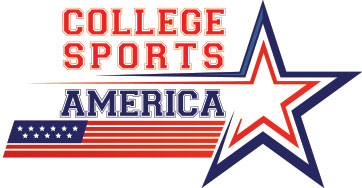Rowing Scholarships
Rowing is one of the oldest collegiate sports in the US and one with a lot of history and tradition attached to it. When universities started having sports teams many decades ago, very often the rowing teams were the standout programs for some of America’s most prestigious universities. A lot of rivalries have therefore been formed over the course of the years and many historic races, such as the Head of the Charles in Boston, Massachussets, are still taking place annualy and draw very big crowds.
Especially on the women’s side, college rowing has seen a very big boost in the last few years, ever since it became an official NCAA sport. Teams are now allowed to give out 20 scholarships per year and with rowing being an equivalency sport, those 20 scholarships can be divided in any way that a coach wishes to. Therefore, rowing rosters are typically large in size and plenty of scholarship opportunities are available. In 2015, on average, NCAA D1 teams had 39 rowers on scholarship, with some teams having up to 50 student athletes receiving any sort of athletic aid.
Am I eligible?
Having a high enough GPA or SAT/ACT score is the most overlooked concept by student athletes looking to be recruited. You can be a top caliber recruit who is wanted by the best teams in the country, but if you do not have the right grades and test scores, you simply will not be eligible to compete in the NCAA or you will not be admitted into the university of your dreams. This is even more crucial in rowing, as most rowing programs come from universities with strict admission requirements. So keep in mind to always work hard, not only in practice, but also in the classroom and when preparing for your SAT and Toefl tests.
Scholarships
In order to qualify for a rowing scholarship, an international rower needs to have a fairly impressive resume, having participated in big national or international events. Besides past results from big, well-known races, coaches most of the time will ask for an athlete’s 2K ERG time, which is a very accurate indicator of a rower’s strength. While it is difficult to say that a certain 2K ERG time will get you a D1 scholarship, and a slower time will automatically get you into division 2, the D1 top recruits on the men’s side usually have times of 6:15 or slightly below that. However, you do not have to be at that time as an incoming freshman. There are indeed plenty of opportunities available for rowers who have slower times as well. So if you are interested in being part of the tradition and history of college rowing, this might be the perfect opportunity for you in your career.
Here are some more important facts about college rowing and rowing scholarships:
- Number of NCAA Div 1 rowing teams: Men 34, Women 87
- Number of NCAA Div 2 rowing teams: Men 5, Women 16
- Total Number of rowing teams (all divisions): Men 71, Women 150
- Total number of college rowers: Men 3000, Women 6000
- Scholarship limit per team: D1 Women: 20, D2 Women: 20, Men: no offcial limit
- College rowing programs with the most national championships: Brown, Ohio State, California, Washington, Virginia
